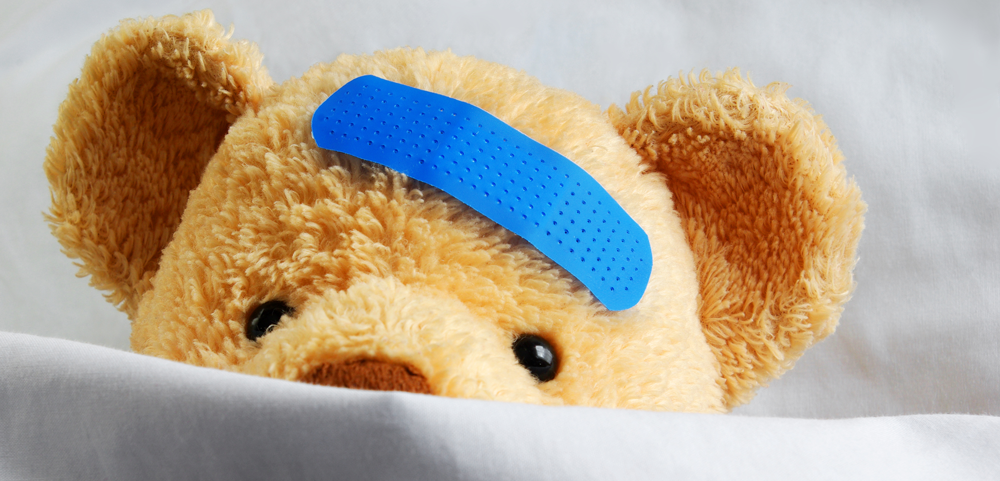Kids bump and bang their way through their early years. They also pick up nasty bugs.
They are kids. That's what they do.
For parents, especially new parents, realizing the seriousness of injury or illness can be agonizing.
A ding to the head can cause a lot of bleeding (compared to a scrape on the knee) - simply because there are more blood vessels in the noggin. A fever spike usually can be treated with a small dose of Tylenol and a cool cloth.
When, though, should you scoop up the child and head to the Emergency Room - or, in more urgent cases, dial 911?

Here are a few recommendations that might help with your decision.
High Fever
A fever is not an illness. It is the body's way to deal with an infection. Kids get all sorts of infections from bugs passed around at school, especially. The American Academy of Pediatrics recommends keeping your child comfortable and give the recommended dose of a pain killer such as Tylenol. Also, make certain the child gets plenty of fluids to avoid dehydration.
Go to the ER when:
- Your child's fever exceeds 104° F, or the fever exceeds 102° F for more than three days.
- Your baby younger than three months has a fever of 100.4°F.
- Your child has a high fever and complains of a stiff neck.
- Your child has a high fever and cannot stop crying or vomiting.
- Your child has a high fever and is lethargic or difficult to wake up.
- Your child has a high fever and a blue tongue or blue lips or nails.
Cuts
A quick look at a cut usually let's you know if you need to head for the Emergency Room. The location of the injury might help with your decision. Again, anything involving the head bleeds a lot and can be treated with ice and a little pressure.
Go to the ER if:
- The wound is gaping and there appears to be a broken bone (especially if the bone protrudes through the skin).
- The bleeding doesn't stop even after applying ice or pressure.
- Your child becomes lethargic or loses consciousness.
Vomiting
Vomiting is your body's way of ridding itself of toxicity in the digestive system. In most cases, an intestinal bug or food poisoning causes the problem. Continuous vomiting, though, indicates a bigger issue.
Go to the ER if:
- Your child has been vomiting for more than 24 hours.
- It appears your child is becoming dehydrated (dry diaper, lack of tears, drop mouth).
- Dehydration is more dangerous than the stomach bug or infection.
- Your child starts vomiting after being hit in the head.
- The vomit is greenish, bloody or looks like coffee grounds (a sign that your child is bleeding internally).
Allergic Reactions
Kids seem more allergic than ever these days. There is lots of research going into why some children break out in hives when eating certain foods such as peanuts or when touching some plants. Reactions are among the single most reason why parents take their children to the ER.
Most times, allergic reactions can be treated with Benadryl and/or a steroid-based cream. You also can avoid the problem by keeping your kids away from triggering foods or plants.
Go to the ER if:
- Your child breaks out in a rash and has trouble breathing.
- The rash turns purple, which could indicate a serious infection.
Bumps and Sprains
A conk to the head or a twisted ankle can cause a "goose egg" to appear. Usually, an ice pack reduces the swelling while ibuprofen eases the pain - and the injury heals in a few days.
Go to the ER if:
- Your child acts in a strange manner, becomes less alert or seems withdrawn after the injury.
- Your child experiences rhythmic jerking or seems to be having an apparent seizure.
- Your child becomes unresponsive or goes unconscious.
You should get immediate care if these symptoms appear after your child has been injured by a blow to the head or has fallen. This could indicate a very serious, if not life-threatening, situation.
If in doubt about what type of care to seek, use your instincts. You know your child better than anyone. If they don't seem to be acting right or you can tell something is seriously wrong, get care right away.
